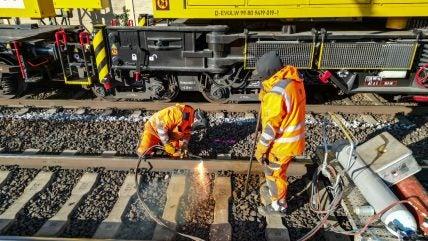Major rail infrastructure upgrades in Slovenia are causing significant temporary reductions in railway capacity, impacting freight logistics across the region. According to Maersk, a leading global shipping company, ongoing construction and modernization efforts along key rail corridors have led to delays and bottlenecks affecting shipments between Europe and India. This development highlights the challenges of balancing essential infrastructure improvements with maintaining efficient supply chain operations in one of Europe’s critical transit hubs.
Major Rail Upgrades Cause Significant Delays and Reduced Capacity on Slovenian Routes
Extensive ongoing infrastructure projects across key Slovenian rail corridors have resulted in numerous operational challenges for freight and passenger services alike. The upgrade work, focused primarily on modernizing tracks, signalling systems, and station facilities, has necessitated temporary closures and speed restrictions, significantly impacting route capacity. Operators report that the current situation has led to longer transit times and unpredictable schedules, complicating logistics planning for international and domestic shipments. These disruptions are particularly crucial considering Slovenia’s pivotal role as a transit gateway between Central Europe and the Mediterranean.
The National Railway Company has outlined a phased construction timeline expected to continue throughout the year, highlighting targeted improvements but warning of fluctuating impacts on traffic flow. Key affected corridors include lines connecting Ljubljana with Maribor and the ports on the Adriatic coast. Below is an overview of major works and their expected completion dates:
| Rail Section | Main Upgrade Focus | Expected Completion | Operational Impact |
|---|---|---|---|
| Ljubljana – Maribor | Track Renewal & Signal Modernization | Q4 2024 | Capacity reduced by 40% |
| Port of Koper Link | Electrification & Safety Enhancements | Q3 2024 | Speed restrictions up to 30% |
| Celje – Ljubljana | Bridge Replacement | Q2 2024 | Single-track operation intermittently |
- Delays of up to 60 minutes are being reported on peak freight routes.
- Alternate routing options have limited availability due to parallel maintenance.
- Operators are advised to allow extra transit time and plan shipments carefully.
Impact on Freight Operations and International Shipping Timelines Examined
The ongoing rail infrastructure upgrades in Slovenia have introduced significant constraints on freight operations, directly affecting the efficiency of international shipping routes connecting Europe and Asia. These capacity limitations have led to increased transit times and scheduling unpredictability, compelling major shipping lines such as Maersk to revise their logistical strategies. Freight operators now face extended dwell times at key Slovenian railway hubs, resulting in freight backlog and a ripple effect across the supply chain. The rail bottleneck particularly impacts container shipments destined for Indian ports, where timing precision remains critical due to tight port schedules and customs operations.
Key operational impacts include:
- Average transit delays increasing by 15-20%
- Reduced rail freight slot availability during peak upgrade phases
- Heightened reliance on alternative land transport, raising costs and emissions
- Disruptions to intermodal connections causing cargo reroutes
| Freight Parameter | Pre-upgrade | During Upgrade |
|---|---|---|
| Average Transit Time (Europe to India) | 12 days | 14.5 days |
| Rail Freight Capacity Utilization | 85% | 60% |
| Container Delay Incidents per Month | 7 | 18 |
Recommendations for Mitigating Disruptions and Enhancing Future Infrastructure Planning
To minimize the impact of ongoing rail upgrades on Slovenia’s railway capacity, stakeholders must adopt a multi-pronged approach focused on coordination and communication. Proactive scheduling of maintenance during off-peak hours, combined with real-time information sharing among freight operators, can significantly reduce delays. Additionally, investing in temporary rail bypasses or alternative routes will help maintain the flow of goods and passengers without overwhelming existing infrastructure.
Key strategies to consider include:
- Enhancing collaboration between government, rail companies, and logistics providers
- Implementing advanced traffic management systems to optimize train scheduling
- Developing contingency plans for sudden disruptions
- Prioritizing investment in digital infrastructure to support predictive maintenance
| Mitigation Measure | Expected Outcome |
|---|---|
| Nighttime Maintenance | Reduced peak-hour delays |
| Alternative Routes | Uninterrupted freight flow |
| Real-Time Communication | Enhanced operational transparency |
| Predictive Maintenance | Lower risk of unplanned outages |
To Wrap It Up
As Slovenia embarks on significant rail infrastructure upgrades, the temporary reduction in railway capacity presents challenges for freight operators and supply chains alike. While these improvements aim to enhance long-term efficiency and connectivity, stakeholders such as Maersk and other key players in the India-Europe shipping corridor will need to adapt to short-term disruptions. Ongoing monitoring of the project’s progress will be crucial to understanding its full impact on regional logistics and international trade flows.
















![First meeting of Azerbaijan‚ÄďUAE Comprehensive Strategic Partnership Cooperation Committee held in Abu Dhabi [PHOTOS] – AzerNews](https://europ.info/wp-content/uploads/2025/11/3031912-first-meeting-of-azerbaijan-uae-comprehensive-strategic-partnership-cooperation-committee-held-in-abu-dhabi-photos-azernews-120x86.jpg)